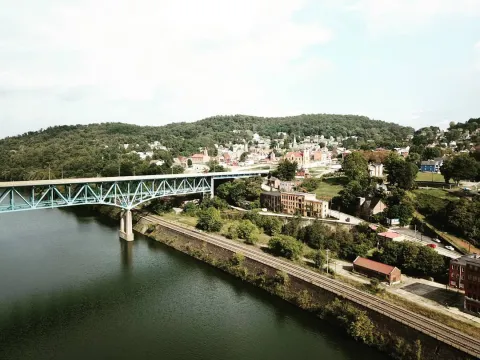Brownsville
Brownsville was founded in 1765 as people were migrating west. There were two significant periods of history. During the early 1800s, the National Road was established when the first road paid for by the United States Government was built through Brownsville (circa 1818).
The town grew in prominence, and it was believed that Pittsburgh could not amount to much because it was too close to Brownsville. History tells us this did not happen. During the mid-1800s, Brownsville began to decline as the railroad became the primary mode of transportation, replacing the National Road, the main artery through the town.
Brownsville resurged again in the late 1800s and early 1900s, when the need for Coal dictated the need for workers and led to the migration of Europeans to the coal mines and coke oven industries. With the influx of employees for the coal mines, coke ovens, and railroads, the population of Brownsville again grew to substantial dimensions. This created a very diversified ethnic population that still exists in the community.
Brownsville has diverse architectural styles. The many churches tell the rich spiritual background of the residents. The rich history is displayed in the two Historic Districts and the five individually listed sites on the National Register of Historic Places.Brownsville is a community of diverse ethnic groups. The population is approximately 2,804. The town is separated by Dunlap Creek, with Northside Market Street on the north side and Southside High Street and Water Street on the south side of the creek. Brownsville is located on the National Road overlooking the Monongahela River. Downtown is now suffering from the demise of the coal industry and the exit of businesses.



